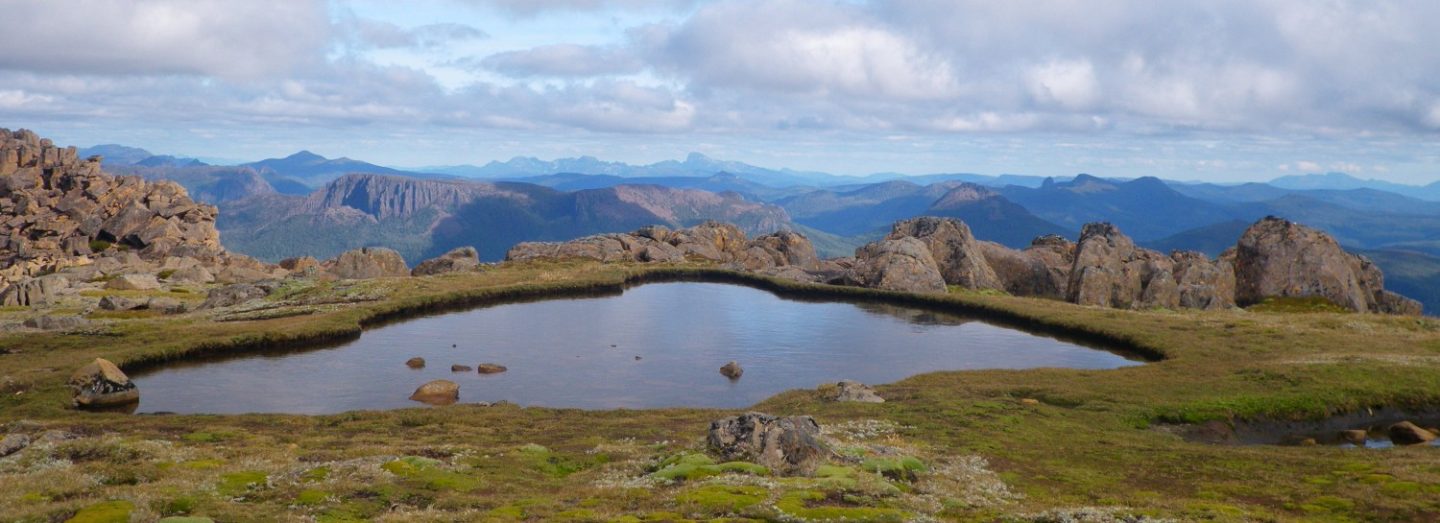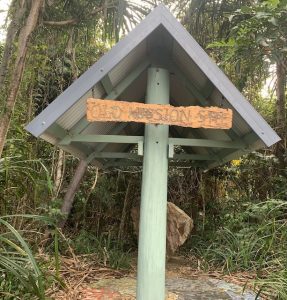We were fortunate recently to have two very restful weeks at Mission Beach, in far north Queensland. We had been there before but knew nothing of what I am about to relate.
This holiday involved a lot of walking around and quickly we began to learn why this place is named ‘Mission Beach’. Here we were on the country of the Djiru people. Closeby is a beach named Bingil, one of the few indigenous names surviving. It means ‘a good and well-watered camp’. The Djiru people lived in the Hull River area with its rich supplies of seafood and rain-forest plants. Conscious that I was on their lands, but seeing so little evidence of them here, I was interested to discover what I could of the people and why this place is called ‘Mission Beach’. So one afternoon we set out to walk to a location named on our local map as ‘The old mission site’. We were so amused when we discovered that the path we followed, taking us approximately 1 kilometre, actually led us back to within 100 metres of where we were living. We were so close and yet we did not know it was there. So close, and yet it was invisible.
The ‘mission’ was never a church or religious mission. In the mid to later 19th century, British people came to the area, conducted expeditions and discovered excellent lands for their intention to grow sugar and other crops. As it happened, among the workforce were some Chinese people and with some of them came the opium habit. In 1914 the Queensland Government determined that this was a threat to the indigenous people and for their ‘protection’ gathered most of them into a ‘mission’ settlement at what is now called South Mission Beach. In 1915 there were around 400 people living there, not only local people: some were from Mourilyan, others from Tully and Murray river areas. It was assumed these were all one people, but they were not. Presumably there were some disturbances, as in 1916 82 people were removed from the mission ‘for disciplinary reasons for their relief and protection’, and taken to Thursday Island and many other far away places, including Cooktown.
It is an appalling story. In 1916 there were almost 500 people living on this small site, but a year later 200 of them died from malaria, which ravaged the community. Still more came and in 1918 there were approximately 300 people present when a cyclone struck, destroying the buildings and flying debris injured many. It was some weeks before a medical officer came to assist them. As many as 50 people died. The people had to survive as best they could, eating tinned foods from the store, green bananas and, amazingly, items found at the top of trees, such as a bag of flour and a case of jam. The response of the Queensland Government was to decide not to rebuild the settlement but instead it removed all of the people further from their country, to Palm Island, which has been a community of First Nations people from many areas, languages and cultural traditions, effectively thrown together and assumed to be one people.
Having visited this place and learned just a little of this story, I was and am deeply saddened. Our walk to visit the mission site is a parable of itself. We were so close to it but did not know it is there. We were living on country belonging to a people who are more or less invisible. The mission made them so. It took them from that ‘good and well-watered camp’ to various places, supposedly for their protection, but with the consequences of disease, unrest, danger and death—both literal death for many and the horrific death of their beautiful and peaceful life in and caring for a beautiful and peaceful place.
That we do not see this, acknowledge it and respect this country and its people must come to visibility and must shape how we now live in the land.





Sensitively written lament respectful of the traditional guardians of country. Thank you Fank.